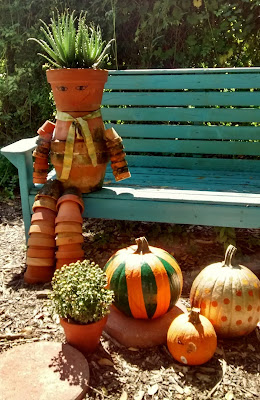31 Days of Sketching
Don't Break the Chain--or the Jerry Seinfeld Way to Establish a Habit
February 17, 2017 |
| Photo courtesy Doru Lupeanu |
Here’s the story as I’ve heard it: many years ago, Brad
Isaac was hanging around comedy clubs and doing open mic nights, and had the
chance to ask Jerry Seinfeld, who was performing in the same club, for his
advice for a young comic. Seinfeld replied that the way to be a better comic
was to create better jokes. The way to create better jokes was to write every
day. Get yourself a large, year-at-a-glance calendar, Seinfeld advised. Write
some new material every day, and when you do, mark the day on the calendar with
a big red X. “After a few days you’ll have a chain. Just keep at it and the
chain will grow longer every day. You’ll like seeing that chain, especially
when you get a few weeks under your belt. Your only job next is to not break
the chain. Don’t break the chain.”
Don’t break the chain.
Recently, I’ve put this idea into practice, with good
results. For years I’ve been saying I want to sketch more, and now I have a
compelling reason to hone my skills. I’m preparing to join Laure Ferlita’s Blue Walk tour in England in August, and I want to be able to sketch what I see.
Back in January of 2015 I challenged myself to sketch for 31 days straight, and
saw a vast improvement, so I decided to try sketching every day again. I
started Sept. 26, 2016, and I’m still going.
Of course, you can apply “don’t break the chain” thinking to
any habit or practice you’re serious about continuing:
- Playing a musical instrument
- Meditation
- Healthy habits like drinking enough water or getting a certain number of hours of sleep a night
- Writing 500 words a day
- [Insert your habit here]
It’s a remarkably effective technique, but it can seem a
little intimidating to commit to doing something every day. Here are a
few things that made the process easier for me:
Make it smallMy goal was so small it felt ridiculous not to meet it: five minutes of sketching every day. Most days, I spend more than five minutes, but having such a small, and very, very achievable goal makes me pick up my pencil and sketchbook. Even when I’m tired, distracted or simply “don’t wanna,” five minutes is still doable.
Every day in my calendar I’ve written the word “sketch,” so every time I check my to-do list I’m reminded of the habit I’m building.
Place whatever you need for your habit in a prominent place. I store my sketching things next to my favorite chair in our family room, and I carry a small sketch kit in my purse.
Use a visual tracking system so you can see the chain. Mark
the calendar day with a big red X, as Seinfeld suggested, or print out this
free “Don’t’ Break the Chain” calendar. There are also “Don’t Break the Chain” apps for both Apple and Android.
Keep it interesting
When I tire of sketching items in my family room, I take my
sketchbook to the backyard, the barn, or a coffee shop. I’ve sketched from
photos and from life. I’ve tried pencil, pen, and watercolor. I’ve worked on
larger sketches for more than one day.
Creating helpful and positive habits can make us happier. I
know I’m happier when I actually do the things I say I want to
do, and the technique of “Don’t Break the Chain” has helped me establish a
regular habit of sketching. Not only do my sketches look better, I’m also less
afraid to sketch in the first place, since now it’s just something I do.
How about you? What habit could you develop by using the “Don’t Break the Chain” technique?
 |
| One of my favorite sketches |









































.jpg)


